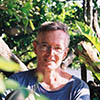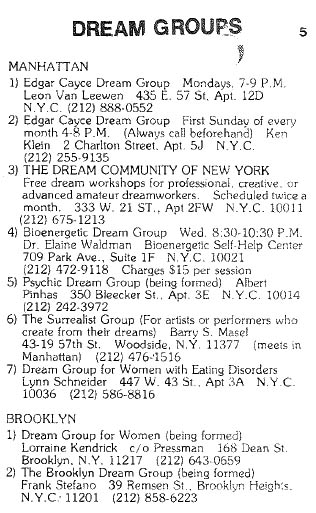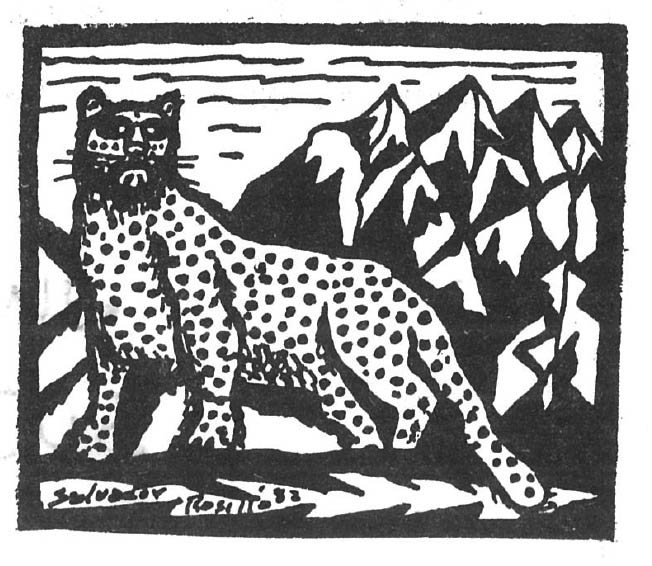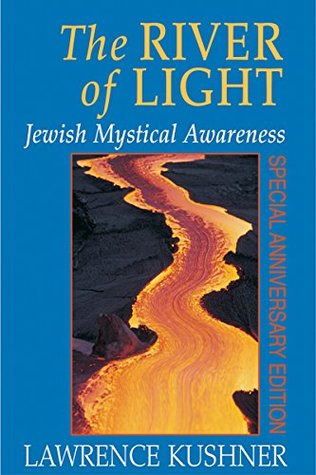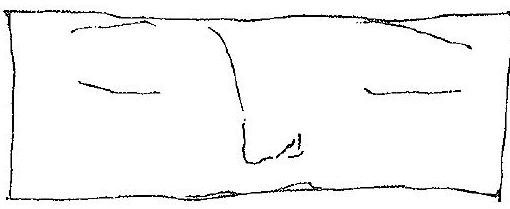The dream mind takes everything in. It makes pictures and stories out of more data than we consciously realize we have at our disposal. The dream mind sees everything fresh. It combines something that happened yesterday with something that happened twenty years ago to liberate an entirely novel perception. Its scope is broader because it is less focused. Perhaps we might vaguely compare the dream mind with the coarse adjustment system on a microscope and the waking mind with the high power fine adjustment apparatus. It is obvious to us that when using the microscope to best advantage we must move back and forth between the two systems. How strange that we are never trained to use our minds in this way also. The dream mind is virtually ignored by our educational system. Our waking minds are trained as if they operated alone, as if they were the only minds we had. What an interesting folly we have created.
This folly becomes patently evident after a while to one who works with his own dreams. Perhaps at first he sees the folly of his life as an inadequacy of his own. He is at the "Something-Is-Wrong-With-Me" stage. But after he has worked with many many dreams and filled several shelves with the dream journals, he becomes aware of himself in a different way and starts to see the world differently too. When he becomes aware of his own ignorance, he is not ignorant anymore. To the degree that he is able to realize his continuing ignorance, he becomes wise. When he can admit his total ignorance, that man is enlightened. All this is called the Creative Process by some. Others call it The Path. It is operative in every individual who has freed himself from conditioning. He is not a robot anymore. He is a human being. The only thing that can condition one such as this is the reality of the moment as he perceives it with his own ever more refined senses. He begins to see through the shallow forms of culture to its universally denied essence. For example, whereas millions adhere to the belief that the Virgin Birth was something that happened to the mother of Jesus in history, he sees that myth as a metaphor for the Creative Process each of us must go through in order to be reborn from our minds into our hearts, a higher site of intelligence. For when we are thinking with our feelings, we are thinking accurately. We discover that our feelings are our thoughts. Such complicated thoughts! We cannot easily accommodate them but if we ignore them a false kind of intelligence is born in us. Our minds can no longer think. They are stupid. They are blocking out too much data. They settle for false substitutes for the thing itself. We aren't playing with a full deck anymore.
A timely example is the "jihad" or Holy War of the Moslems. Today there are millions in Iran willing to slaughter their own ethnic brothers in the service of this "Holy" mission. But the Holy War is not a war between men or nations. It is a war within each of us. Its weapons are not violence and treachery but peace and love. It is the Creative Process of reowning the whole of ourselves. If we are locked up in our bodies, it means reowning our minds. If we are locked up in our minds, it means reowning our bodies. We can be locked up in our hearts too if that was the only place of refuge we had during the course of our development. What a turbulent black hole this place can be and many of us are perhaps a little psychotic. How else to explain the world we create around us? Of course, we don't see our world as psychotic. Do you think the Iranian zealot sees how crazy the order is that he serves? No, he can only see our kind of craziness, not his own. He is a blind man causing a great deal of pain and misery in the world. He is a lot like us.
I think it is clear that in matters of religion we are a lot like the Cargo-cultist of the Pacific Islands, going through the motions of the thing as a way to get the thing itself. We laugh at the Melanesian who makes a cardboard carton refrigerator and sits at an upturned crate "table" pretending to drink from an empty beer can in order to capture the magic that will bring him the wealth and success of the White Man. But we take our own stupid substitutes for religion just as seriously as the native takes the cardboard carton refrigerator in which he carefully replaces his rusty old beer can.
"O.K." I have heard some modern intellectuals say, trying to set themselves above all this stupidity, "But I am an atheist. I believe in Science. In Science we see things as they are. In Science we don't fall prey to all this foolishness. Science is Exact." Hah! How the Dream laughs every time we become exact! What pleasure it will have with us now that we think we know something! And how the Dream cries every time we turn our back on it like this, every time we sell out to a metaphor at the price of the thing itself. Let us take a look at Science, the established religion of our modern culture, and see if it is immune from the follies we inflict upon ourselves by ignoring our creative side. Anthropology is as good an example as any.
Let's say we live in an age of sexual suppression. Our bodies themselves dream of freedom. Let's say we are Margaret Mead. Let's say we visit Samoa. Let's say the dream in our body is liberated by the exotic surroundings. We are Anthropologists performing an exact science but do we see the Samoans or do we see what the Samoans liberate within us? Is what we are seeing not actually our own dream? One who has not worked extensively with his own dreams would object if we told him the world he sees around him with his own eyes is only his dream. But those of us who have worked ourselves in a little closer with our own dream minds have discovered over and over again that when we can own our own desires and wants and express these freely we no longer have an emotional need to misconstrue the reality we see around us. We can see things more clearly for what they are. It is only when we begin to awaken that we realize we're living a dream. New facts now come to the fore.
We are told now that the factual reality for Margaret Mead's reports of sexual freedom in Samoa was never there in the first place. The new facts appear to be sound. But should Margaret Mead be attacked as a bad Anthropologist? Maybe the whole thing has nothing at all to do with her. She lived in an age that longed for sexual freedom. Through her that age created a fiction that helped dispel its ignorance of itself. Through her eyes it saw in the Samoans what it needed to find in itself. I guess psychologists would call this a "projection." We see in others what we disown in ourselves. A projection is a fiction. It is something that doesn't exist "out there" but "in here." Margaret Mead gave her generation the fiction it needed to liberate itself. Gauguin was off in Tahiti, illustrating the text.
Our Science, like our lives, is largely a fiction. This realization is threatening to the modern intellectual who is unschooled in the ways of the dream mind. He lashes out at Margaret Mead as a bad Anthropologist. She was a good Anthropologist, but she was an Anthropologist of her time, as all others are. And among the Anthropologists of her time she was a genius.
What is a genius? A genius is a great artist. He may be a physicist like Einstein or a psychologist like Freud, depending on what art form he chooses. Oh how this grates against the nerve of those who need to think in categories! Their minds are in a straitjacket. Margaret Mead was a genius because she played a major role in freeing the mind of her generation from the particular straitjacket that had been imposed upon it. Should she be criticized for using Anthropology as her art form? After all, aren't all of our explorations really explorations of ourselves? Out of our body's dreams we weave art.
From that art we find a new reality. The sexual freedom Margaret Mead painted among the Samoans has now permeated our own culture. Like anything long buried, it has gone a little "bad" and is emerging in some strange ways. But the fresh air will shake it out a bit. It will be its old self again after a few generations, a self that it has never been able to be before, anywhere, ever. It has a freedom now it never had before. And when we begin to taste that freedom ourselves we can see why it needs to be restricted. But the difference now is that we will restrict it in our own ways, the ways that work for us, and not with the rigid formulae that are culturally imposed from a time in history when conditions were not as they are now. Margaret Mead and the other great artists of her generation set us free. The world as they saw it was a fictitious creation of their own dreams. Their dreams became our actuality. As a result, we can see the world a little differently. We can see the Samoans a little differently. Anthropology has changed because we have changed and we see things differently now.
I think it is in this light that we must examine the growing controversy over Kilton Stewart's Anthropology of the Senoi and the dream psychology that a number of individuals have fashioned from it. What I am proposing we do is look at the situation in reverse. Instead of imagining that we are actually finding out the truth about the Senoi finally, let us realize that the only thing we are really exploring in our studies of the Senoi is our ability to perceive the truth about ourselves.
I for one am not in any position to know the facts about that tribe but from the letters I have been receiving of late, which unfortunately I have been asked not to publish, I am reasonably convinced that Stewart's Anthropology can be seen now as another fiction. It hardly matters that his study was a detailed and thorough one, as several have pointed out. The issue may not be whether he was a good or a bad Anthropologist, although it seems some are trying to make it into that. The issue may merely be that the unfelt needs of his own culture and his own generation colored what he saw and reported. Anthropology once again became an art form. Anthropology once again taught us something about ourselves. How arrogant to assume it could ever teach us anything else. How presumptuous to assume that what we see and report is ever reality itself. How blind to see our Science as anything more than a reflection of our own state of conscious development.
If we examine Kilton Stewart's marvelous fiction as a specimen of consciousness of the society that created it, we see our own denied dreams leaping out at us. Have you ever heard of Senoi dream workshop leader expounding on how peaceful and creative the tribe is? The very tones that he uses show that he's talking about a dream he has in his own heart, a vision he has for his own society: a vision of interpersonal harmony, absence of crime and insane violence; a vision of sharing and communication between individuals in society and between those individuals and society itself that is deep and powerful and creative. Is it any wonder that Kilton Stewart's study of a remote Malaysian tribe was seized upon by so many individuals in our society? It reflects our own dream of creative freedom from the kind of bureaucratic and repressive society that results when we ignore our dreaming mind-the kind of society that poisons our very relationship with violence and sickness. How wonderful and simple it would be if we only needed to attend to our dreams to free ourselves from all this. Maybe people were only too ready to believe Kilton Stewarts study because it was true, not for the Senoi, but for us.
It remains to be seen what the actual facts about the Senoi are. But we can no longer deny that Kilton Stewart's Anthropology has taught us much about ourselves. It was a picture of our own future, like fiction often is; It immediately began to permeate our lives, as good art always does. The idea got out that a healed society was possible if only we would reown our own deepest dreams, the furthermost reaches of our own consciousness, the thoughtforms of our own bodies-our feelings. Maybe a few more of us now are finally ready to let go of our dead religions and our false sciences and embark, each one of us, on the Path of the great ones from Jesus to Einstein-that process of creative transformation of self and relationship that will revolutionize our world like it has never been revolutionized before. The Science of the future will become the science of the impossible as slowly we begin to take off our straitjackets and discover ourselves, each other, and the world for the first time.

